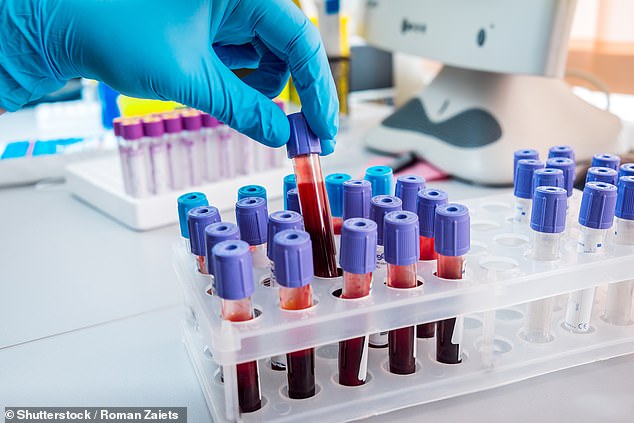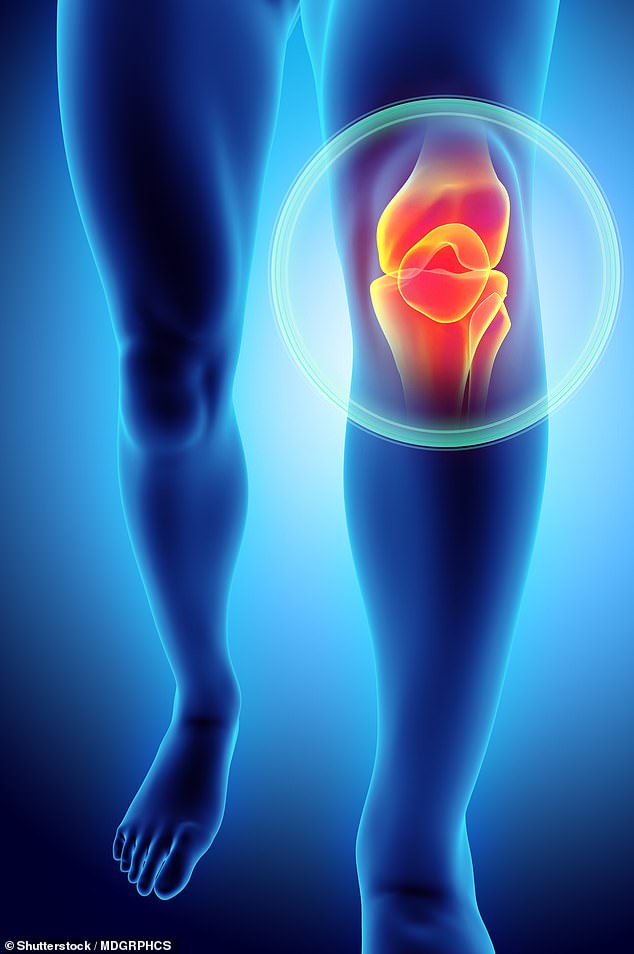A blood test could detect osteoarthritis in the knees up to eight years before it shows up on X-rays, raising hopes for preventive treatment.
The condition, which is thought to affect more than five million people in the UK, occurs when the cartilage in the knee joint breaks down, causing it to become painful and stiff.
The disease is usually not detected until it has already caused structural damage to the joint.
Surgery has been the only option available for many, with more than 120,000 knee replacements performed in the UK each year.
But the new test, which can detect the disease years in advance, could offer a “window of opportunity” to restore joint health.
Blood test could detect osteoarthritis in the knees up to eight years before it shows up on x-rays, raising hopes for preventive treatment (file image)

But the new test, which can detect the condition years in advance, could provide a “window of opportunity” to restore joint health (file image)

The disease is usually not detected until it has already caused structural damage to the joint (file image)
Professor Virginia Kraus, from Duke University School of Medicine, said: “Currently, it is necessary to have an abnormal x-ray to show clear evidence of knee osteoarthritis, and when it shows up on the x-ray, your disease has been progressing for some time. some time.
“What our blood test shows is that it is possible to detect this disease much earlier than current diagnostics allow.”
The main symptoms of osteoarthritis are joint pain, stiffness, and problems moving the joint. Some people also experience swelling, tenderness, and squeaking or crackling sounds when moving.
Almost any joint can be affected, but it most commonly causes problems in the knees, hips, and small joints in the hands. The researchers analyzed the blood serum of 200 women, half with a diagnosis of osteoarthritis and the other half without the disease.
The findings, published in the journal Science Advances, showed biomarkers (signatures in the blood) that distinguished women with knee osteoarthritis from those without it.
The test detected signs of the condition up to eight years before many of the women were diagnosed by X-ray.

Surgery has been the only option available for many, with more than 120,000 knee replacements carried out in the UK each year (file image)

Researchers analyzed the blood serum of 200 women: half diagnosed with osteoarthritis and the other half without the disease (file image)
“This is important because it provides evidence that there are abnormalities in the joint that can be detected by blood biomarkers long before X-rays can detect osteoarthritis,” Professor Kraus added.
“Early-stage osteoarthritis could offer an opportunity to stop the disease process and restore joint health.”
There are currently no cures for osteoarthritis, but the success of future therapies could depend on identifying the disease early and slowing its progression.
The cause is unknown, but older age, obesity, and being female are thought to increase the risk.


